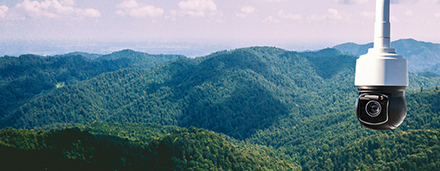Two problems have been solved, or partly solved, in the Green Triangle.
The first is a guarantee of $15 million to boost reliable mobile telephone network throughout the Limestone Coast, and the second is the introduction of AI detection of fire outbreaks.
It is clearly ridiculous that the Green Triangle – along with its $860 million forestry industry – does not have decent mobile coverage.
It would have been patently obvious to anyone attending the Green Triangle Timber Industry Awards in recent years that there was little or no mobile signal at the function centre, just 10km from the centre of South Australia’s largest regional city.
The implications of this should a bushfire break out are unimaginable.
Thankfully that $15 million investment into a national-first program to boost coverage within the Limestone Coast will make a huge difference.
Twenty-seven new mobile base stations will be installed throughout the region, expanding the 4G coverage by almost 2,500 square kilometres.
SAFPA CEO Nathan Paine said that once delivered, the Limestone Coast will be the most connected up region in the nation.
But it’s not just improved fire-fighting capabilities that will be made available.
“For forestry, connectivity and quick access to data will not just improve the productivity levels of forest and timber industries but will drive the next generation of technological advancement, whether that be autonomous vehicles, better mapping our estate, improved fire detection or increased domestic manufacturing to name just a few – essentially embracing a future of digital forests,” Mr Paine said.
Linked to all this is the news that the first two game-changing artificial intelligence (AI) powered bushfire camera detection and monitoring systems are now operational.
The Pano AI system, being implemented for the first time commercially in Australia, will be part of a network of eight such detections systems being installed in south-east South Australia as part of the South Australian Government’s $2.346 million upgrade of the region’s fire tower network, with $1 million targeting the new technology. The program also receives significant support and funding from forest industries.
The new system follows technology trials conducted at The Bluff, Penola North and Mt Burr towers along with a further industry funded camera at Centenary Tower during the 2022–23 fire season. Installation work on the cutting-edge system is expected to commence shortly and be in place in time for the 2023–24 fire season.
Spanning 14 locations, Pano AI offers a comprehensive turnkey solution that integrates high-definition cameras, satellite feeds, artificial intelligence, and modern cloud software to detect and pinpoint new ignitions and alert fire professionals within minutes.
The transition to the AI powered bushfire detection and monitoring system, will result in an Australian first fully integrated active bushfire detection platform utilising satellite technology, ultra-HD 360-degree panoramic cameras and AI aimed at improving early detection of fires.
There has been much written and said waring about what is seen by many as the insidious move by AI to take control of everything.
But little seems to be said about the benefits.
In this case, the Green Triangle is the beneficiary of AI, both in terms of connectivity and fire protection.
And that can only help emergency services personal hopefully sleep a little better this bushfire season.






